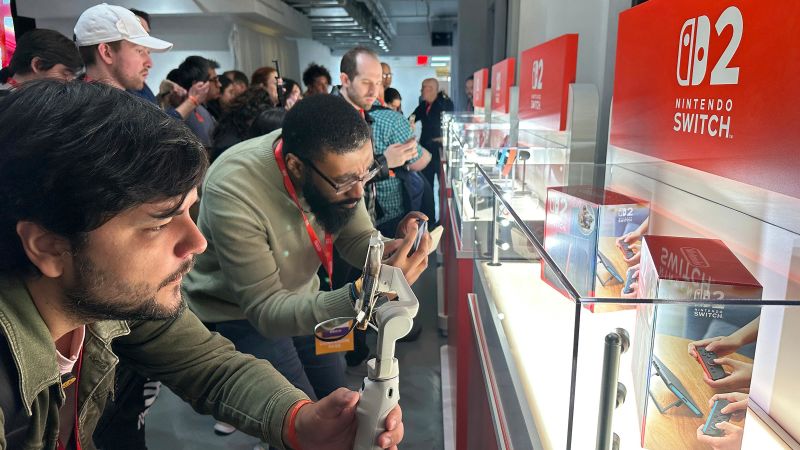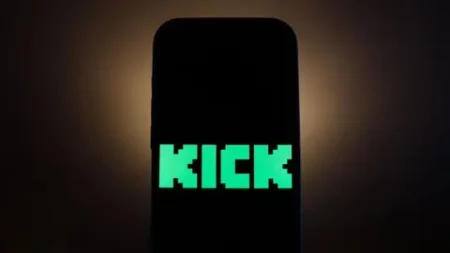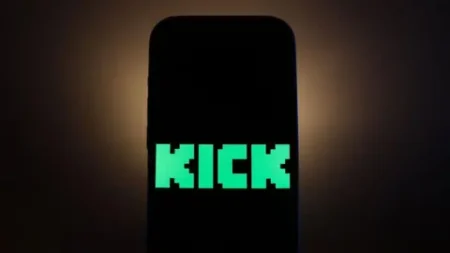Nintendo, a name synonymous with video gaming innovation, has made a strong statement recently by unveiling the Switch 2. Scheduled for release on June 5 and priced at $450, it represents a notable increase from its predecessor’s $300 price tag. The mind behind this significant leap is Doug Bowser, the President of Nintendo of America, who conveys confidence in the company’s direction.
The Switch 2 is not merely an upgrade, but rather a comprehensive evolution of the original Switch, which initially made waves when it debuted eight years prior. Launched in 2017, the original device set the stage by merging home console gaming with portable accessibility. However, the newly announced Switch 2 amplifies this concept to a greater degree, intensifying competition in a landscape increasingly shared with formidable players such as Valve and Lenovo. With this transition, Nintendo seems to be taking a calculated risk, banking on the enduring popularity of its gaming model throughout the next decade.
Launching such a pivotal product during a challenging economic environment brings with it a spectrum of uncertainties. The recent surge in tariffs introduced by former President Donald Trump targeted Asian goods, capturing the gaming giant’s attention. Recognizing the potential impact on their logistics, Nintendo postponed the U.S. preorder date from April 9 to thoroughly assess market conditions and the inevitable implications of these tariffs. Bowser emphasized that pricing strategies had considered historical tariff effects, promising a deliberate approach to navigate the waters ahead.
Typically known for its groundbreaking approaches, Nintendo’s decision to remain anchored to the successful formula of the Switch could be seen as audacious. Yet, Bowser passionately articulates that the essence of the Switch 2 captures a unique versatility for gamers, allowing seamless transitions between handheld scenarios, tabletop play, or docking at home for a conventional gaming experience.
The gaming sector now stands more competitive than it did in 2017, with a plethora of companies looking to carve their niche in the handheld market. Valve’s Steam Deck has particularly resonated with consumers, allowing a bridge to play PC games on a portable device. This influx of competition presses on Nintendo, which faces an uphill battle, yet the Switch remains a titan, having topped 150 million units sold, while the competing handheld market struggles with sales figures in the millions.
Competing platforms are beginning to take notice; the Switch 2 could be a strategic maneuver to reclaim dominance. Sony and Microsoft have both made strides in portable gaming, with the launch of the PlayStation Portal and initiatives to project cloud gaming across devices. Meanwhile, Nintendo aims to widen its appeal beyond core fans by introducing powerful hardware and features that can connect with a broader gaming audience.
The Switch 2 comes with notable enhancements like improved processing power, 4K resolution, larger screens, and new Joy-Con controllers that serve as more versatile tools for gaming. Bowser attests that while the design appears similar, upgrades within bring a new vigor to the experience.
Nonetheless, hardware is just one piece of Nintendo’s approach. The company has a rich library of beloved franchises, but with the Switch 2, there’s a deliberate pivot toward incorporating third-party games. Titles such as *Elden Ring* and *Cyberpunk 2077* are highlighted, signifying the effort to provide diversity and prevent players from feeling torn between the Switch or competitors like the Steam Deck.
In striving for greater market share, Nintendo’s pricing strategy places the Switch 2 in direct competition with major consoles, emphasizing the need for a strong value proposition. The planned increase in game prices, including an $80 tag for *Mario Kart World*, further complicates the landscape, especially in light of economic pressure on consumers.
Nintendo’s intent to integrate social gaming features via GameChat offers an appealing innovation. Coupled with fresh controller uses, the company appears committed to keeping its offerings engaging.
While Bowser did not confirm any new Mario titles with the announcement, one can expect that the company will leverage its expansive catalog to keep users engaged and excited for the future.
With the Switch 2 embodying both confidence and strategic foresight, Nintendo is poised to navigate an evolving marketplace, riding the wave of nostalgia and innovation that has defined its legacy. In an industry filled with unpredictability, the company holds onto its charm, aiming to captivate a diverse audience for years to come.










